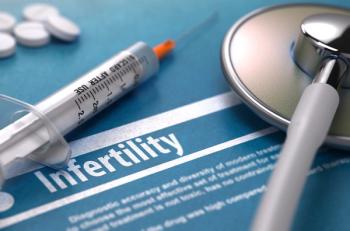
DermaSensor device improves skin cancer detection in primary care settings, studies find
Key Takeaways
- DermaSensor's device demonstrated 96% sensitivity and 97% NPV for skin cancer detection, surpassing FDA melanoma detection thresholds.
- The device improved primary care physicians' cancer referral accuracy by 50%, significantly aiding decision-making.
In one of the studies, physicians aided by the DermaSensor device correctly referred 91.4% of cancers, compared with 82.0% without the device — a 50% reduction in missed cancer referrals.
Two newly published FDA pivotal studies show that a handheld spectroscopy device developed by
What the studies found
In a validation study of 1,005 patients across 22 primary care sites, the ESS device demonstrated a 96% sensitivity for detecting skin cancers, including melanoma, basal cell carcinoma (BCC), and squamous cell carcinoma (SCC). The negative predictive value (NPV) was 97%, indicating high confidence when ruling out malignancy. These figures exceed the FDA’s sensitivity threshold for melanoma detection, set at 90%, and align with sensitivity levels reported for dermatologists.
“The DermaSensor device is an easy-to-use, point-of-care, handheld skin cancer assessment device with high sensitivity and NPV for use in the primary care setting,” wrote lead study author Stephen Merry, MD, MPH, of the Mayo Clinic. “Use of the device can help inform PCP decision-making about skin lesions suspicious for cancer.”
A companion study assessed how the device impacted physician decision-making. Among 108 PCPs, use of DermaSensor led to a significant improvement in identifying and appropriately referring malignant lesions. Physicians aided by the device correctly referred 91.4% of cancers, compared with 82.0% without the device—a 50% reduction in missed cancer referrals.
Lead author Laura Ferris, MD, PhD, chair of dermatology at the University of North Carolina at Chapel Hill, noted the clinical significance. “It has been a long-time unaddressed goal of the dermatology and primary care communities to have an easy-to-use tool that can provide an automated risk assessment for suspicious lesions,” Ferris said. “Given the clear device benefits that our study and others have demonstrated, I am optimistic for the impact this device will have on skin cancer detection and care.”
“These two FDA pivotal studies — the main clinical studies of the six submitted to FDA — highlight the strong performance and benefits of our device, which were instrumental in DermaSensor becoming the first FDA-authorized tool in the US that provides anyone with any kind of objective risk assessment for melanoma, BCC and SCC.” said Cody Simmons, Co-Founder and CEO of DermaSensor. “Since receiving FDA De Novo clearance of this FDA Breakthrough Device last year, there are already hundreds of diverse doctors using our devices, and we are working to quickly scale device adoption so that our device can benefit many of the millions of patients that are diagnosed with skin cancer each year.”
The studies, published in the Journal of Primary Care and Community Health, evaluated the diagnostic performance and clinical utility of DermaSensor, a non-invasive, point-of-care device that uses elastic scattering spectroscopy (ESS) to assess suspicious skin lesions. Researchers from Mayo Clinic, Yale University, the University of North Carolina School of Medicine, and SUNY Downstate Health Sciences University participated in the multicenter trials.
How DermaSensor works
The DermaSensor device provides clinicians with a numeric risk score from 1 to 10. While lower scores correlate with lower cancer probability, higher scores strongly suggest malignancy. For example, lesions rated 10 had a positive predictive value (PPV) of 61%, compared with 6% for those rated 1.
The FDA authorized DermaSensor through the De Novo pathway following its Breakthrough Device designation. The company reports that hundreds of providers have already adopted the tool in clinical practice since its clearance.
Skin cancer remains the most common cancer worldwide, with incidence rates exceeding all other cancers combined. Despite being largely preventable and treatable when detected early, many skin cancers are missed in their initial stages — especially in primary care, where dermatologic training may be limited and referral access constrained.
DermaSensor is currently FDA cleared and CE marked and is commercially available in the United States. The company says the device can offer a cost-effective, fast, and objective
Powered by artificial intelligence, the DermaSensor device uses ESS to evaluate the cellular and subcellular characteristics of suspicious skin lesions. Five spectral recordings collected in a single scan are evaluated by an FDA-cleared algorithm developed and originally validated scans of more than 20,000 lesions. The primary care clinician receives a reading that says, “Investigate Further,” indicating a referral should be made to a dermatologist, or “Monitor,” an outcome which could help rule out a majority of unnecessary referrals for benign lesions.
In a
About DermaSensor
Founded in 2009, DermaSensor developed the first handheld device using elastic scattering spectroscopy (ESS) to non-invasively assess skin lesions for cancer. The technology, once the size of a microwave, now fits in the palm of a hand and uses light to detect cellular-level changes indicative of malignancy. The company’s proprietary algorithm, built from thousands of pathology-confirmed samples, enables real-time analysis of spectral data — providing risk assessments in seconds rather than waiting days for biopsy results.
Newsletter
Stay informed and empowered with Medical Economics enewsletter, delivering expert insights, financial strategies, practice management tips and technology trends — tailored for today’s physicians.














